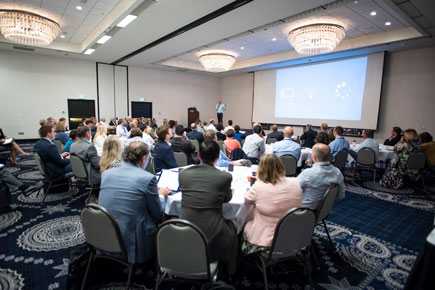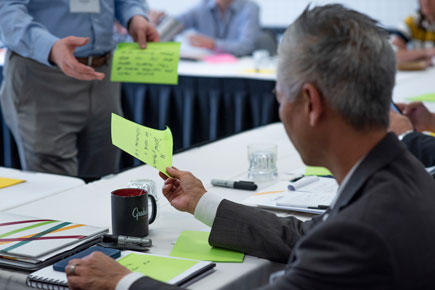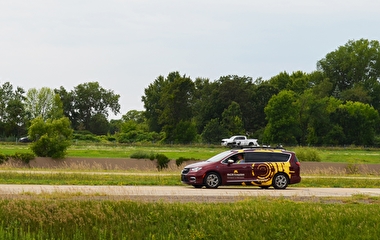For years, automated vehicles (AVs) have been the subject of research, testing, and avid speculation. And while the technology is developing rapidly, AV-focused policies are much further behind.
With this in mind, CTS hosted a two-day Strategic Visioning Workshop for Automated Vehicles in Minnesota on June 25 and 26. The event convened about 100 representatives from across the public, private, academic, and nonprofit sectors to define and advance an agenda related to AVs in the state. The workshop was sponsored by CTS, the McKnight Foundation, the Minnesota Department of Transportation, Hennepin County, and the Metropolitan Council.
In addition to featuring presentations by AV experts and transportation practitioners from around the country (see related article), the workshop engaged participants in the development of an action plan for Minnesota that focuses on deployment. This included outlining a vision, prioritizing strategies, and identifying champions to lead key plan elements.
One of the workshop’s first activities was a facilitated discussion in which participants explored the benefits to Minnesota of being a leader in AV advancement, potential challenges, partners needed for success, and big moves that could provide the greatest benefit in moving forward. Themes that emerged from the discussion included:
- AVs could help reduce the cost of transportation, increase access to jobs, address the equity gap, and attract a talented workforce.
- Our cold-weather climate presents unique challenges for AV technology, but it could also position us as a testing ground.
- To bring maximum benefits, we need to define our metrics around human-centered outcomes.
- Important partners include the private and public sectors, general public, freight industry, organized labor, builders/contractors, elected officials, and travel/tourism industry.
- Big moves could include establishing an AV corridor to demonstrate the technology in a controlled environment and distinguishing ourselves by focusing on people rather than just technology.
Participants also worked in small groups to create a vision for the state of AV deployment in Minnesota 10 years from now, including the progress that will be needed in key areas to make that vision a reality.
Based on those discussions, attendees collaboratively developed 18 proposed strategies in the areas of people mobility, freight mobility, traffic operations and safety, and planning, environment, and economic development. Each draft strategy includes suggested action steps, champions, partners, and timeframes. Examples include defining the problems AVs could help solve, developing AV freight pilot projects, educating the public about functions and limitations of AV technologies, and integrating the full cost of transportation into decision making.
Going forward, outcomes from the workshop will be used to help frame the direction for the future of AVs in Minnesota. Preliminary information has already been shared with the Governor’s Advisory Council on Connected and Automated Vehicles. A complete summary of the event, including the action plan and proposed strategies, will be available this fall on the CTS website.




